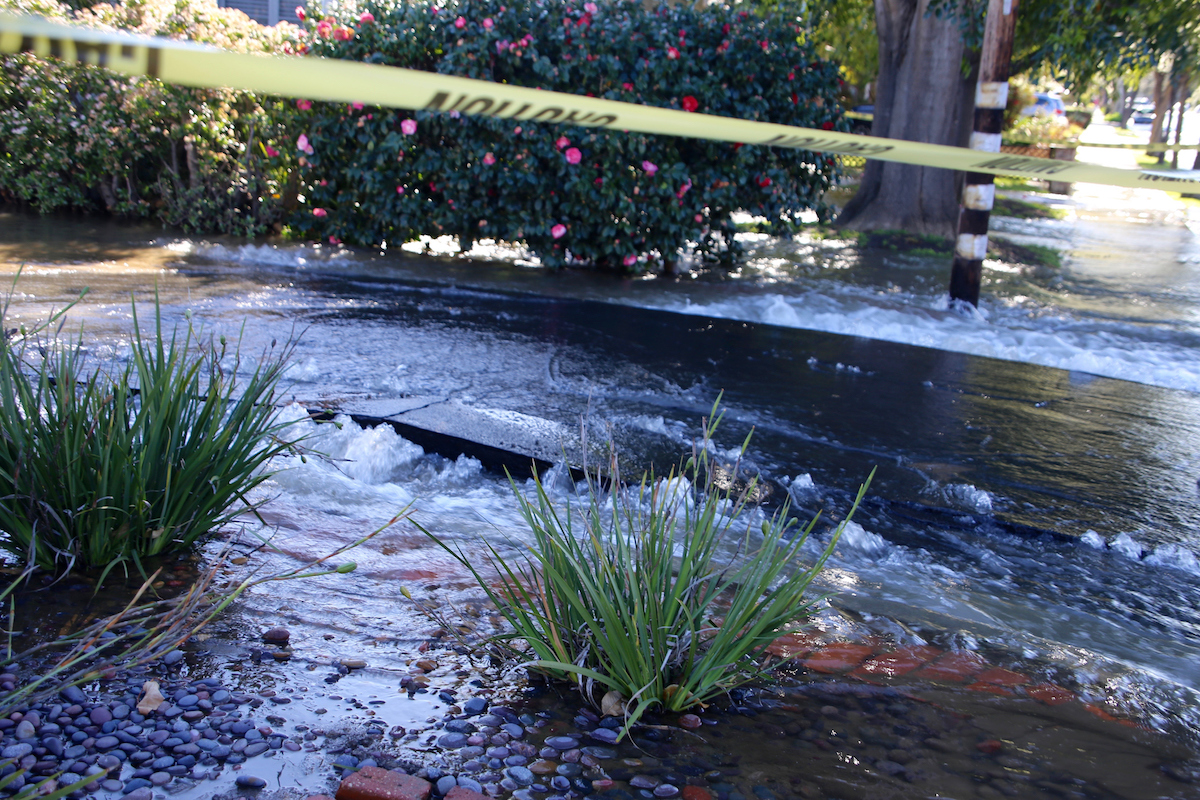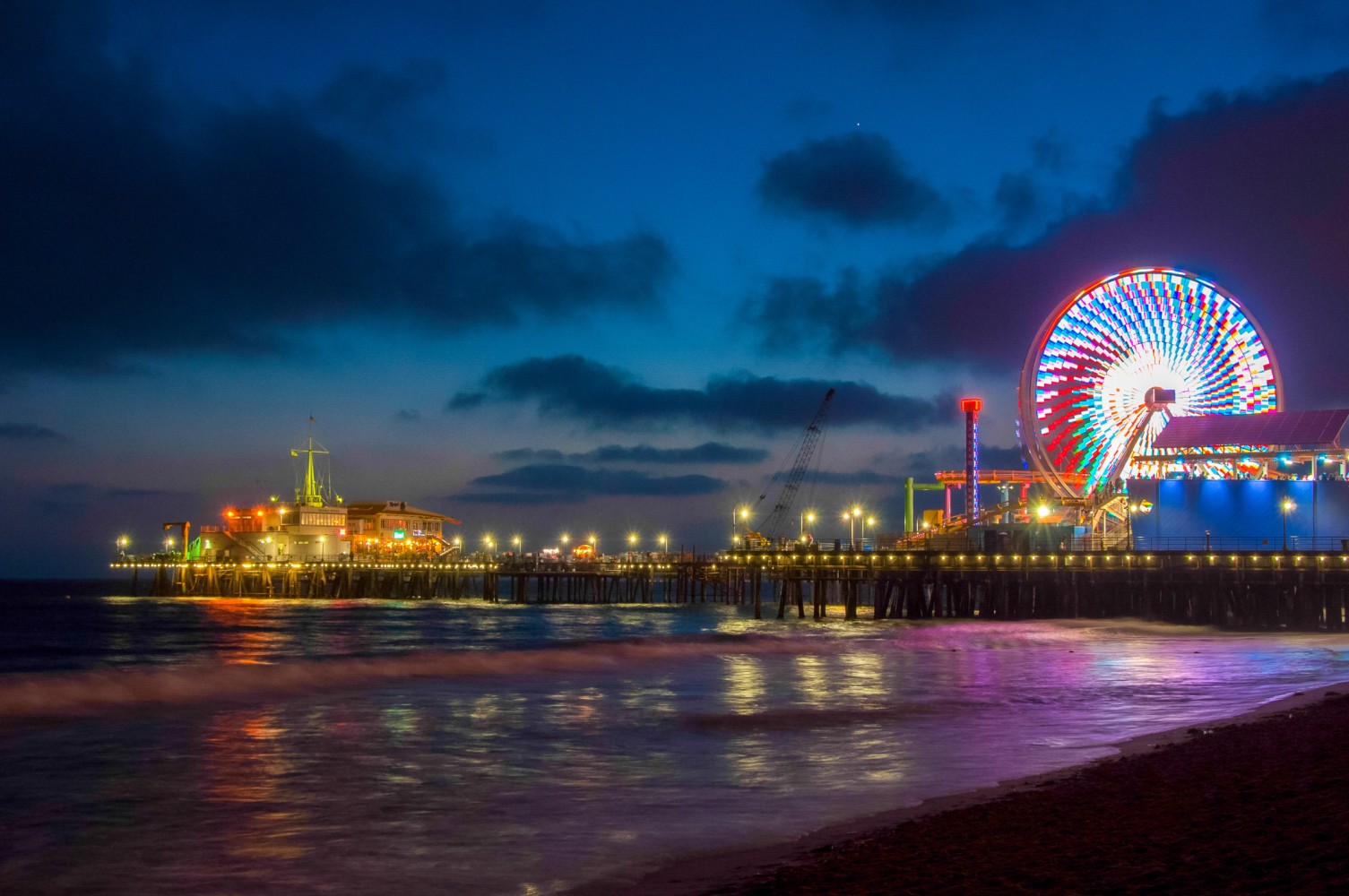
The new year has started with water, lots of WATER. The west coast and particularly central and northern California have been pummeled with torrents of biblical proportions. This coming week seems like it will be a continuation of the last week’s flooding for the northern 2/3s of the State. However, here in Santa Monica we have been blessed, for now, with a steady drizzle and occasional downpours. In fact at about the midpoint of this rainy season (July 2022 to June 2023), we have already received 8” (78%) of our normal (2013-2022) 10 1/4” average annual rainfall: so it suggests that this will become a very very wet year. This is exceptionally good news. Our storm water recycling system can operate at optimum capacity. Our street trees, parks and garden landscaping can relax after being stressed by three years of drought. And our resident’s water frugality has gotten our City through a very severe test. All those short showers and brown lawns have paid off.
However, welcome this respite is, we have as a City and a State been given a temporary reprieve from the decades long drying and heating of the Western United States. But it’s only a temporary reprieve. Even with the current flooding our reservoirs and snow pack have not recovered to their full historical normal capacity for this time of the year. It will take several years of this kind of super rains to even catch up to the historical norms much less accumulate surplus capacity.This is because global warming has crushed our historical norms. For example in Santa Monica the last decade averaged 10 1/4”/year, but the one (2003-2012) before that had averaged 12 3/8”: a 17% drop in 10 years. You can see where this is going.
Rainfall is key
The last 8 years have been globally the hottest in recent history, Our available rainfall which is always in a dynamic balance between greater evaporation and subsequent condensation, has been inexorably decreasing. That complex dynamic balance is changing and becoming more unstable because while the heating oceans can provide more evaporated water to the atmosphere, the mountains and winds will deliver that increased evaporated water in many different amounts, times and locations Weather systems are very complex with an infinite number of variables and feed back loops, and when complex systems change they never change in a smooth linear fashion.There’s always instability. There are general trends but also wild excursions form the norm. For example the Santa Monica annual rainfall since 2000 has ranged from a pitiful 1 1/4”(2007) to a whopping 32 1/8” (2005). In other words the new normal is a general trend punctuated by catastrophic deviations. Needless to say, the deviations can be positive or negative compared to the trending norm. In our case since 2000 the range is from about only 1/8 the norm to almost 3 times the norm.
Why is this regional and local rainfall important? It’s simply because we to live in an incredibly arid location. Many coastal cities on our latitude are equally dry: Casablanca (5 3/4” /year) and Tel Aviv ( 11 1/2”/year); all struggle to get sufficient water. So our ability live, in what is almost a desert, depends on a steady supply of water for ourselves, our plants and our businesses. Rain, with all its fluctuations is really our only stable source of water. Whether it falls in Utah and is captured by the struggling Hoover Dam or it falls in the Santa Monica Mountains and percolates to our wells on the eastern edge of the city, the source is the same: rain blown in from the Pacific.
Our Water needs have been Stable (so far)
The amount of water Santa Monica needs today is about 11,000 acre feet (an acre foot is the water a foot deep over an acre or 43,560 square feet). Like our resident population which has slightly fluctuated in the 90,000-93,000 range over the last half decade, our water usage has remained rather stable:
- 2022 – 11,000 acre feet (estimated)
- 2021 – 10,641 acre feet
- 2020 – 10,580 acre feet
- 2019 – 11,030 acre feet
- 2018 – 11,651 acre feet
- 2017 – 11,502 acre feet
The nominal 10% drop in consumption between 2017-2019 and 2020-2021 reflects the impact of Covid in reducing demand (fewer tourists) and the residents and businesses becoming more efficient in water usage. We are now escalating back to the pre-Covid water consumption levels. Tourism is returning and is approximately 75-80% of what it was pre Covid.
The City, seeing what is coming, has active programs to try to reduce consumption and increase supply to try to stay ahead of this demand curve. The City wanted to be water independent (no imported water by 2023) but that goal no longer seems feasible primarily because of the expected over building mandated by the State of California. Looking ahead there are clouds on our horizon (if we can use that metaphor here). As the West dries out the water from the Colorado River (Hoover Dam) will become harder and harder to get and much more expensive as hundreds of western cities and agricultural interests in half a dozen states compete for each drop. Already our City is increasing your water bill by 20% each year for 5 years doubling its cost to consumers. Eventually the City will need to drop out of the Colorado River supply chain via the Metropolitan Water District (MWD) for its normal supply and only use the MWD as a backup in case of some exceptional water supply disaster.
Our wells will be working overtime
This trend shifts the water supply burden to our wells and to a certain extent to storm/sewer partially purified recycled water for grey water uses. These uses are primarily watering landscaping and flushing toilets in dual piped buildings and currently represent about 10% of our available water or about 1000-1130 acre feet. So our wells will need to provide about 90% of our water or 9,900 acre feet per year at today’s demand. The sustainable yield form our wells is actually unknown, but the 2018 estimate is a range of 10,800-13,595 acre feet. The sustainable yield is where the pumped out water is replaced by an equal amount of water from adjacent strata without dropping the water table to a dry depth. Wells actually can run dry when pumped out as is happening in the Central Valley to many small towns. However notice that the estimated sustainable yield of our basin is actually decreasing as you would expect during a time of declining rainfall and better instrumentation. In 2013 the sustainable yield was estimated at 15.930-19,700 acre feet which means our sustainable estimate has fallen 31% to the 2018 estimate.
But looking ahead we can see that the State of California’s unjustifiable mandated 18,000 person population increase over the next 8 years will start to stress our water system,(among other infrastructure). We expect to see a demand increase of 1000 to 2000 acre feet if these new residents use 50 gallons per day or 100 gallons per day. This takes us from about a 9900 acre feet base to 10,900-11,900 acre feet which is very close to the estimated 10,800-13595 sustainable yield limit. In other words when that build out occurs the City may not have any cushion in the face of other demands changes such as a 220 acre Airport park with all its vegetation or the return of the tourists to previous levels (when the City experience is safer) or the continuing shrinkage of our rainfall or when other Cities break our basins legal safeguards and drill into “our” water basin. In contrast, if we have a severe recession and families keep leaving the City, our water demands may not be so intense. These known unknowns ,combined with the estimated nature of all these numbers, make it very dangerous for any City to operate without a cushion for something as critical as water.
Keep on Keeping on
In the face of these anticipated difficulties and uncertainties the resident or businesses should keep doing what we have already been doing with dozens of water saving actions from shorter showers, to rain barrels, to low flow plumbing fixtures to reduced irrigation etc. The gallon that you do not pump out of our water basin today will be there when you need it tomorrow.
By Mario Fonda-Bonardi AIA
For for SMa.r.t. (Santa Monica Architects for a Responsible Tomorrow)
Dan Jansenson, Architect, Building & Fire-Life Safety Commissioner; Mario Fonda Bonardi AIA, Planning Commissioner; Ron Goldman, Architect FAIA; Robert H. Taylor, Architect AIA: Thane Roberts, Architect; Samuel Tolkin Architect & Planning Commissioner;.; Michael Jolly, AIRCRE santamonicasmart@gmail.com












